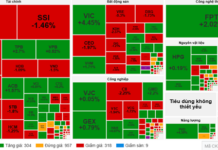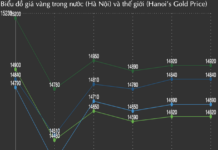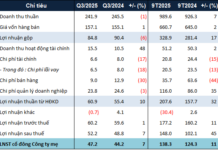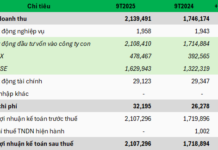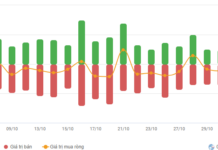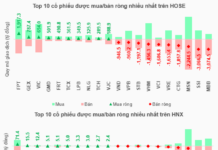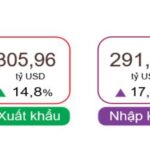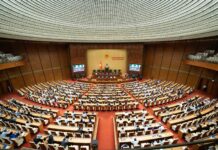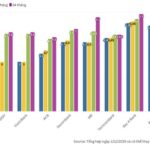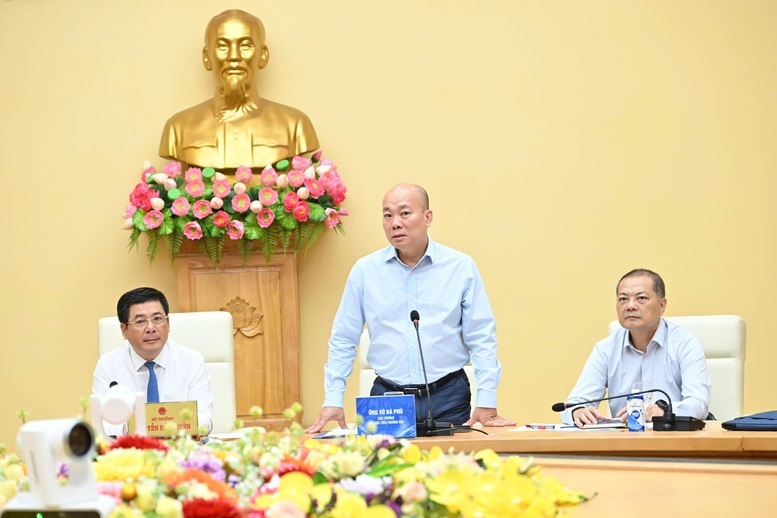
Mr. Vu Ba Phu, Director of the Trade Promotion Agency, shares insights into the trade landscape for the first eight months of 2025
|
According to Mr. Vu Ba Phu, Director of the Trade Promotion Agency, the government has set a challenging yet promising target for the industry and trade sector this year: a 12% increase in total export-import turnover and a trade surplus of approximately $30 billion. This goal is crucial as it sets the foundation for the 2026-2030 period, when the economy enters a new phase with a focus on sustainable growth and maximizing the benefits of free trade agreements (FTAs) that Vietnam has signed.
The trade picture for the first eight months of 2025 shows positive signals. Total import-export turnover reached nearly $305 billion, a 14.4% increase compared to the same period in 2024. This is an impressive result considering the uncertainties in the global economy, trade conflicts, and geopolitical tensions that heavily impact international supply chains. The FDI sector continues to play a leading role with $228 billion, an increase of over 18%, while the domestic enterprise sector achieved $76.5 billion, a 3% increase. This reflects the outstanding resilience of the FDI sector and also highlights the limitations in competitiveness faced by domestic enterprises. This presents a significant challenge for the government and the Ministry of Industry and Trade in supporting and enhancing the position of Vietnamese businesses in the global value chain.
Opportunities from Key Markets
At the conference, representatives of Vietnamese trade offices abroad provided valuable insights into market trends, pointing out opportunities for market expansion while also frankly discussing the challenges. Regarding the Chinese market, Mr. Nong Duc Lai, Commercial Counselor of Vietnam in China, shared that the world’s second-largest economy is actively expanding investment and trade relations, continuously adding permitted investment sectors, and applying preferential tariffs. Notably, China has shown a more open attitude towards imported agricultural and aquatic products. In the first half of 2025, China granted import permits to approximately 15 agricultural, forestry, and aquatic products from nearly 20 countries, including Cambodian durian, Malaysian fresh coconut, Ecuadorian mango, Gambian cashew nuts, and aquatic products from New Zealand, Brazil, and Kenya.
The US market continues to play a pivotal role in Vietnam’s export turnover. Mr. Do Ngoc Hung, Commercial Counselor of Vietnam in the US, informed that in the first seven months of 2025, two-way trade turnover reached $114.5 billion, a 41% increase compared to the same period in 2024. Vietnam’s exports reached $106 billion, a 44% increase, while imports from the US were at $8 billion, resulting in a trade surplus of $98 billion. This record-high figure reflects the strong appeal of Vietnamese goods in the US market.
Key product groups such as machinery and equipment, wood and wooden products, textiles and garments, and aquatic products maintained high growth rates, with many items increasing by 15% to over 100%. Notably, the Vietnam International Sourcing 2025 event enabled Vietnamese businesses to directly engage with large distribution systems and participate more deeply in the global supply chain. However, challenges remain. Trade remedies are becoming more prevalent, while tariff and rules of origin remain significant barriers. Mr. Hung emphasized the need for businesses to ensure transparency in product origin, strictly adhere to production processes, and proactively forecast and prepare for trade litigation.
Taking Advantage of FTAs
Mr. Ngo Chung Khanh, Deputy Director of the Department of Multilateral Trade Policy, noted that while the absolute value contributed by FTA markets shows positive results, in relative terms, many markets such as the EU, India, Mexico, and Canada have not achieved growth and even show a decreasing trend. This indicates that many Vietnamese businesses have not fully exploited the potential of these agreements. According to Mr. Khanh, to take advantage of FTAs effectively, Vietnam needs to set specific targets for each market, identifying priority markets, key products, and desired growth rates. Based on these targets, trade offices, businesses, and domestic units must coordinate seamlessly and clearly define responsibilities, moving beyond general measures.
A notable warning came from Ms. Truong Thuy Linh, Deputy Director of the Trade Defense Department. She pointed out that many trade defense cases against Vietnamese exports have been initiated, and the scope of investigations is continuously expanding, especially in terms of evasion. Countries are now focusing on the origin of imported raw materials used by Vietnamese businesses for export production. This underscores the urgent need for businesses to diversify their raw material sources and avoid dependence on certain markets that are prone to anti-dumping or countervailing duties. Ms. Linh also suggested that trade offices proactively monitor developments and promptly notify associations and businesses to adjust their strategies accordingly.
From a market development perspective, Mr. Ta Hoang Linh, Director of the Foreign Market Department, identified that some current targets are still too low. He proposed three key solutions for trade offices: enhancing interactions with local traders, distribution systems, and industry associations to seek opportunities and promote transactions; organizing more foreign business delegations to visit Vietnam to seek suppliers and participate in trade fairs, building on the success of Vietnam Sourcing with over 450 delegations and nearly 10,000 B2B meetings; and actively working with local authorities to remove trade barriers, promote new FTA negotiations, and advocate for market access for Vietnamese agricultural and aquatic products.
Regarding industry associations and businesses, Mr. Linh emphasized the requirement to strictly adhere to food safety control processes, standardize and transparentize the supply chain to meet the stringent requirements of import markets, particularly the EU and China. Businesses need to proactively update new regulations, especially on pesticide residues, and invest in green production processes to align with international environmental and labor standards.
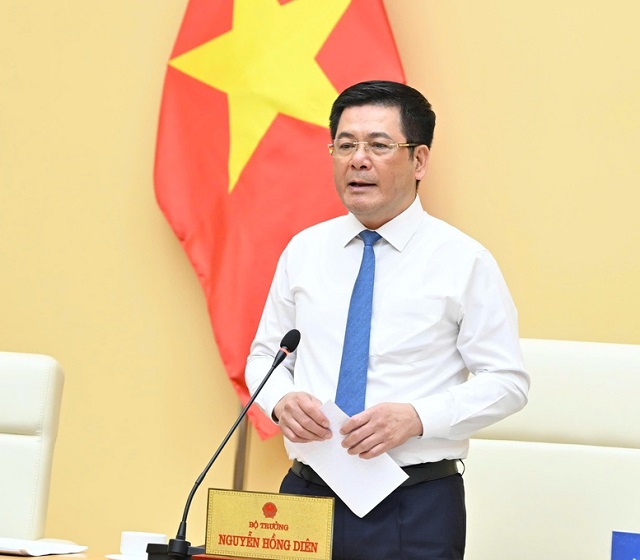
Minister Nguyen Hong Dien emphasizes the importance of market classification and specific task implementation to achieve growth targets
|
Diversifying Markets and Ensuring Raw Material Supply
In conclusion, Minister Nguyen Hong Dien highlighted that achieving growth targets requires a focused approach to market classification and specific task implementation. For markets with negative growth, trade offices must quickly identify the causes, restore orders, and remove barriers. For markets with low growth, the task is to boost exports by at least 8.5%. For markets with moderate growth, the goal is to maintain the momentum and aim for a 12% increase. As for high-growth markets, they must continue to be the “locomotive” and strive for over 15% growth to pull up the overall turnover.
Beyond market expansion, the Minister also emphasized building resilience in businesses. This includes encouraging enterprises to actively participate in the digital trade promotion ecosystem, diversifying supply chains and raw material sources, investing in green technology and traceability, and strengthening industry associations to become connecting points that provide timely information, market orientation, and brand-building support for their members.
Additionally, the Minister requested closer coordination between ministries and sectors, especially the Ministry of Finance, the State Bank, the Ministry of Agriculture and Environment, and the Ministry of Foreign Affairs, to address enterprises’ difficulties. Solutions related to tax policies, credit, quarantine and testing, and FTA negotiations must be implemented synchronously and promptly.
Regarding local governments, the Minister urged them to be more proactive in supporting export enterprises. Local authorities are expected to promptly receive and share information from Vietnamese trade counselors and offices abroad, enabling businesses in their areas to adjust their production and business plans and avoid being caught off guard by new barriers. Furthermore, local governments should work closely with enterprises and industry associations to form sustainable supply chains, increase value, and meet the stringent requirements of international markets.
– 13:45 09/09/2025
“Vietnam Achieves a Surplus of Nearly $14 Billion in the First Eight Months of 2025”
According to the latest statistics released by the General Statistics Office, the total import and export turnover of goods in August reached an impressive $83.06 billion, marking a 0.9% increase from the previous month and a significant 16.0% surge compared to the same period last year. For the first eight months of 2025, the cumulative import and export turnover of goods stood at $597.93 billion, reflecting a robust 16.3% year-on-year growth. This growth was driven by a 14.8% increase in exports and an even more substantial 17.9% rise in imports. The trade balance recorded a surplus of $13.99 billion, indicating a thriving and dynamic economic landscape.
Is There Room for the Market to Reach New Heights?
The Vietnamese market is poised for new heights, according to Dao Hong Duong, Industry and Stock Analyst at VPBank Securities. With a diverse portfolio strategy, there are strong foundations for optimism in the coming months. This expert insight suggests a bright outlook for Vietnam’s economic landscape, indicating potential peaks in the market and emphasizing the importance of strategic investment approaches.
The Ministry of Industry and Trade Launches Anti-Dumping Investigation into Indian Ceramic Wall and Floor Tiles.
I hope that suits your needs and captures the essence of what you were aiming for. Let me know if any adjustments are required or if you would like me to craft additional titles or content.
The domestic manufacturing industry has lodged a complaint against Indian-origin ceramic wall and floor tile products, alleging that they are being dumped into the Vietnamese market at significantly low prices, causing substantial harm to local manufacturers.

